The 3.84TB G-Drive Pro SSD hits some insane speed marks, but costs a fortune
posted Thursday, June 14, 2018 at 2:45 PM EST
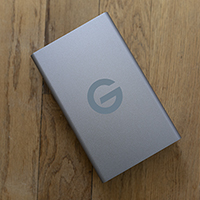
Recently we reviewed the latest G-Drive with Thunderbolt 3 from G-Technology, and found it to be a pretty solid drive aside from its relatively average read/write speeds. It seems G-Tech wanted to prove they could go faster with the release of the G-Drive Pro SSD, and boy did they ever. Rated to hit 2800 MB/s, this stackable, daisy-chain-ready, Thunderbolt 3 box is insanely fast, but that speed comes at a price.
The new G-Drive Pro SSD comes in four capacity options: 960GB, 1.92TB, 3.84TB and 7.68TB. The lowest capacity comes in at $1299, while the largest capacity rings up at a sweat-inducing $7499. For this review, we were loaned the 3.84TB capacity version that retails for $3999.
Even their sub-one terabyte option comes in at an eyebrow-raising price, and by the time you get up to the more sought-after capacities the asking price is well above the average photographer/videographer's budget (if we consider it from the dollar per gigabyte frame of reference). We'll get into the actual speed of these devices in a moment, but given just the specifications of the G-Drive Pro SSD, those looking for the kind of transfer rates of which these are capable aren't going to be satisfied with the lower-capacity options. If this product interests you, odds are you're looking for the most capacity possible in the 7.68 TB (which at the writing of this review was sold out at B&H, which makes sense).
What I'm saying is, this device isn't for the average photographer/videographer. It was designed and priced for the high-end video professional, like those working with something like a RED or an Arri Alexa. This is a working drive, not a backup solution, and from that frame of reference there aren't really a lot of options out there to fit the needs of a shooter working with those kinds of cameras. So while the pricing may seem crazy to many photographers, it is kind of expected for the target market (for good or bad).
From a build quality perspective, it looks nearly identical to the aforementioned "consumer-level" G-Drive with TB3. It does sport a somewhat "sexier" color (what Apple might call "Space Grey") and also sees the addition of an external fan and the subtraction of the USB-C port (it only has two Thunderbolt 3 ports). You can daisy chain these (up to five devices), as mentioned, which is nice for studios that want to run most of their drives off a single cable chain, and it also allows you to do an external RAID if you wanted (I do not recommend this, but it COULD seriously beef up the speed of your transfer rates if you were in desperate need).
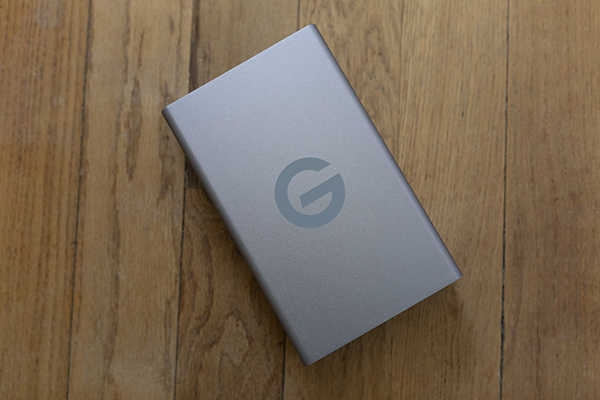
The last thing of note is the lock slot on the rear of the drive that allows you to bolt the drive to a desk, which I highly recommend if you're in a shared office space. For something this expensive, you had better make sure it doesn't get stolen.
Because G-Tech removed the USB-C port found on the HDD version of this drive and only included the two Thunderbolt 3 ports, your connection options are more limited. You cannot connect to this drive using a USB-A to USB-C cable like you could with the HDD version. You can, however, still use a USB-C 3.1 cable if you were so inclined, but you will see a performance dip.
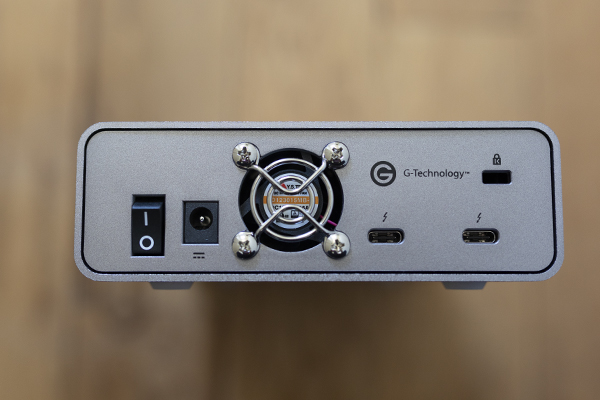
I tested the drive three ways: a Thunderbolt 3 cable, a USB-C 3.1 cable, and a Thunderbolt 2 to Thunderbolt 3 converter (these are somewhat unreliable, but you can get them from Apple and they are serviceable in many cases). The results are below:
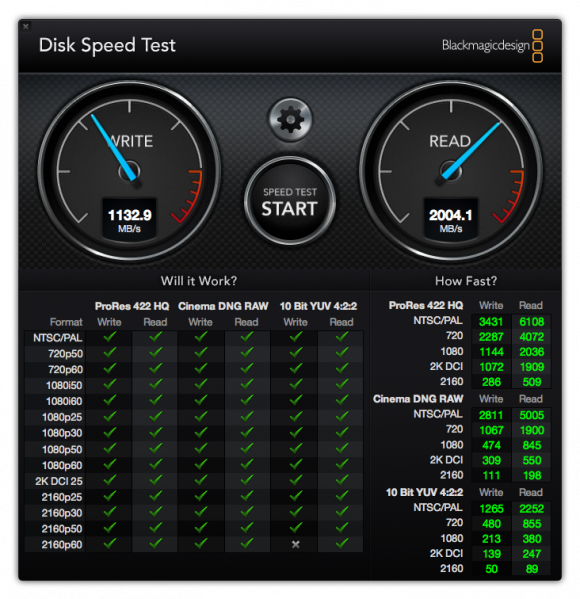
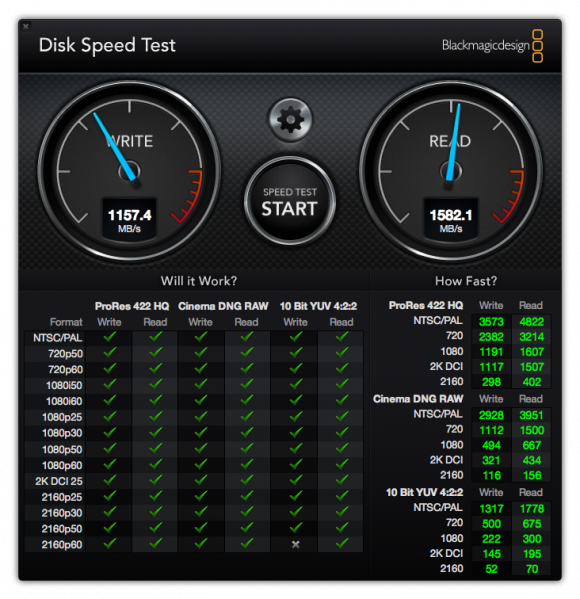
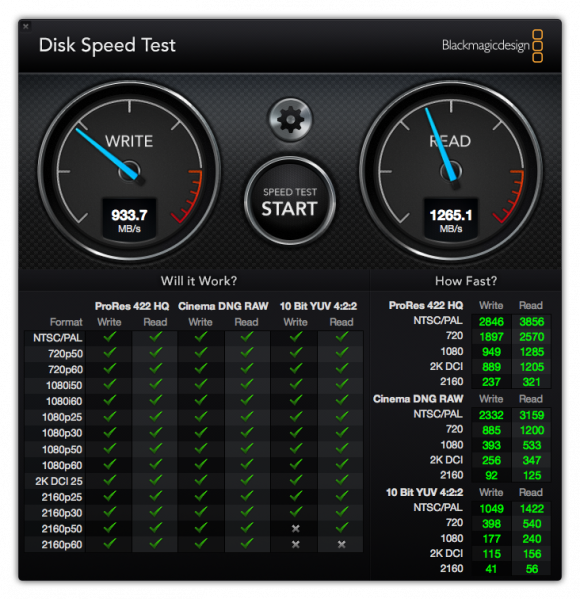
Unsurprisingly, the best results come when using the Thunderbolt 3 cable, with the fastest read speeds I've encountered on a drive with this much capacity. The write speed is much slower than the read speed, but both are very high. That said, I was not able to get a read speed anywhere close to the rated 2800 MB/s, which is a disappointment. If I'm paying this much for a drive, it had better deliver.
If for some reason you don't have a Thunderbolt 3 cable on hand, you can use a USB-C cable in a pinch. I used a USB-C 3.1 cable, the fastest USB-C cable currently on the market, and that worked fine, though it dropped 500MB/s in read speeds from the Thunderbolt 3 cable.
Finally, the Thunderbolt 2 to Thunderbolt 3 convertor cable saw an even greater dip in max read speeds, but it was still impressive, especially for that more dated format.
And that is just about all there is with this drive. It is worth mentioning that the SSD inside of the enclosure is a "high-endurance enterprise-class" SSD, with a one drive write per day endurance rating. This means it's rated to give you long-term sustained performance for "enhanced reliability for demanding workloads." That is to say, it shouldn't fail. And should it fail, it comes with a 5-year limited warranty.
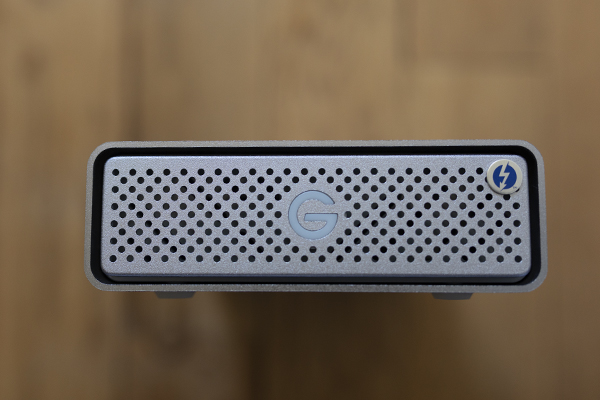
Pros:
- Fast. Really fast
- Pretty quiet. Silent when in standby/minor operation, and the fan only engages during sustained high-level use and is not loud
- The darker metal finish looks nice
- Sturdy and light weight
- Small footprint that stacks easily
Cons:
- Did not hit promised read speeds (800 MB/s slower than rated in our testing)
- Very Expensive
Is this drive for you? If you haven't had problems with dumping your memory cards in a reasonable amount of time, or you haven't struggled with a Premiere or Final Cut attempting to play your video files, then probably not. But if you are running an 8K video workflow and are struggling with these problems, then this drive is designed specifically for you. It's really expensive, but not when compared to the cost of the what you are using to capture footage at the kind of resolution that the G-Drive SSD speed would be needed for.
So while this drive rocks and is one of the fastest I've tested, especially above three terabytes, it's not something that the majority of shooters are ever going to need for the price and capacity that is being offered.